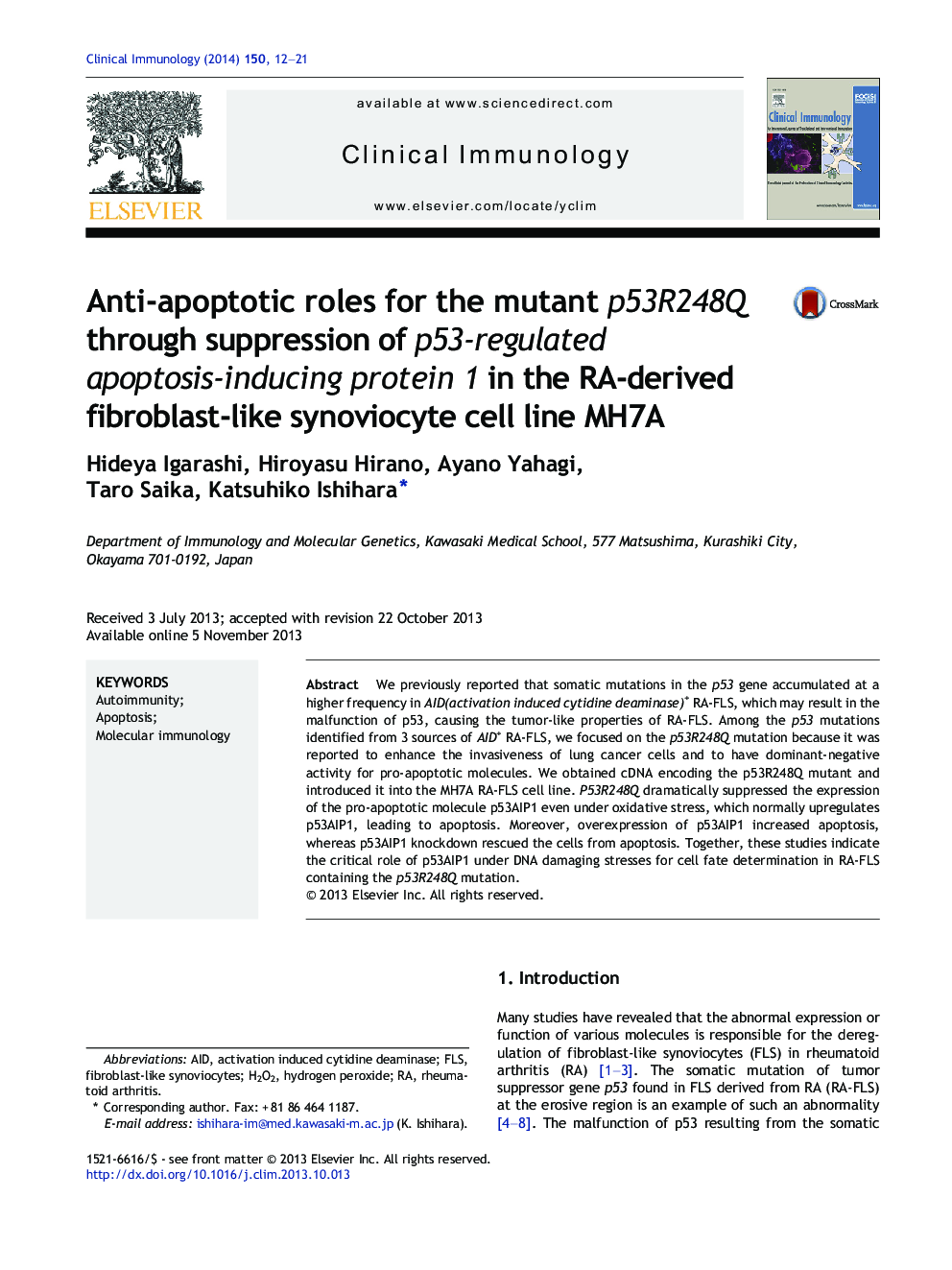| Article ID | Journal | Published Year | Pages | File Type |
|---|---|---|---|---|
| 3256915 | Clinical Immunology | 2014 | 10 Pages |
•P53R248Q in RA-FLS increased resistance to apoptosis induced by oxidative stress.•P53R248Q in RA-FLS suppresses phosphorylation of ser46 of p53.•P53R248Q over-expressed in RA-FLS suppresses transcription of p53AIP1.•Knockdown of p53AIP1 protected RA-FLS from apoptosis under oxidative stress.•RA-FLS with p53R248Q has tumor-like phenotype by suppression of p53AIP1.
We previously reported that somatic mutations in the p53 gene accumulated at a higher frequency in AID(activation induced cytidine deaminase)+ RA-FLS, which may result in the malfunction of p53, causing the tumor-like properties of RA-FLS. Among the p53 mutations identified from 3 sources of AID+ RA-FLS, we focused on the p53R248Q mutation because it was reported to enhance the invasiveness of lung cancer cells and to have dominant-negative activity for pro-apoptotic molecules. We obtained cDNA encoding the p53R248Q mutant and introduced it into the MH7A RA-FLS cell line. P53R248Q dramatically suppressed the expression of the pro-apoptotic molecule p53AIP1 even under oxidative stress, which normally upregulates p53AIP1, leading to apoptosis. Moreover, overexpression of p53AIP1 increased apoptosis, whereas p53AIP1 knockdown rescued the cells from apoptosis. Together, these studies indicate the critical role of p53AIP1 under DNA damaging stresses for cell fate determination in RA-FLS containing the p53R248Q mutation.
